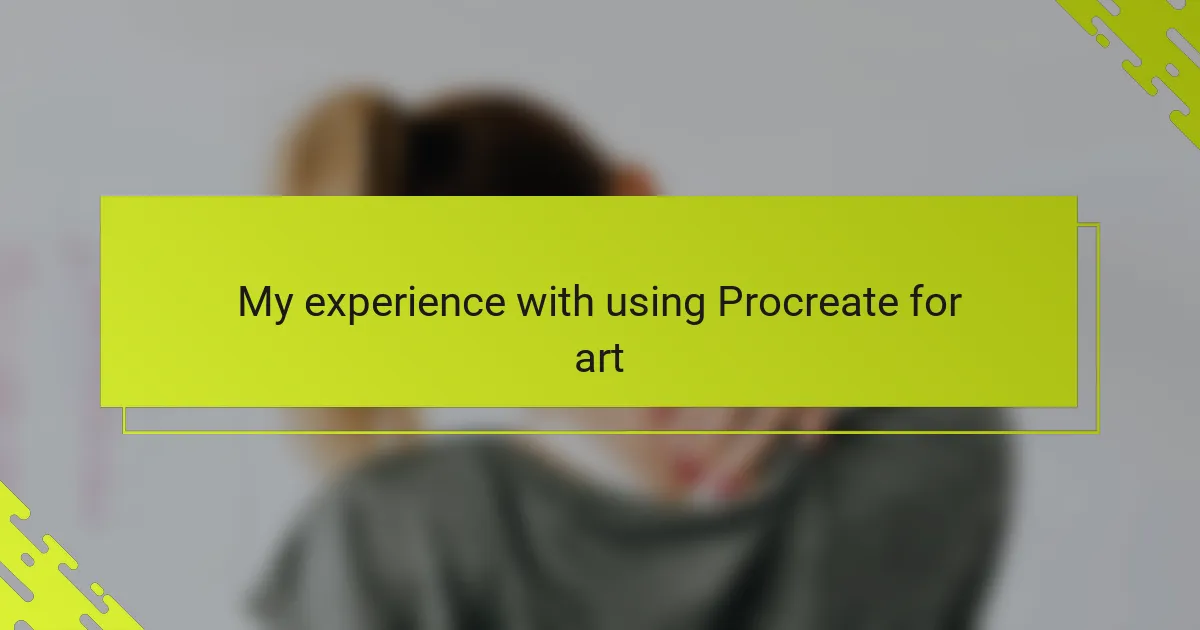Key takeaways
- Procreate offers an intuitive platform for artists, allowing them to focus on creative expression without technical barriers.
- Customization options for brushes and layers promote flexibility, enabling artists to explore their emotions and narratives meaningfully.
- Engaging with niche communities online can enhance the representation of diverse experiences in digital art and provide supportive feedback.
- Mastering Procreate’s organizational tools, like layer naming and color coding, simplifies the creation process and fosters emotional clarity in artwork.
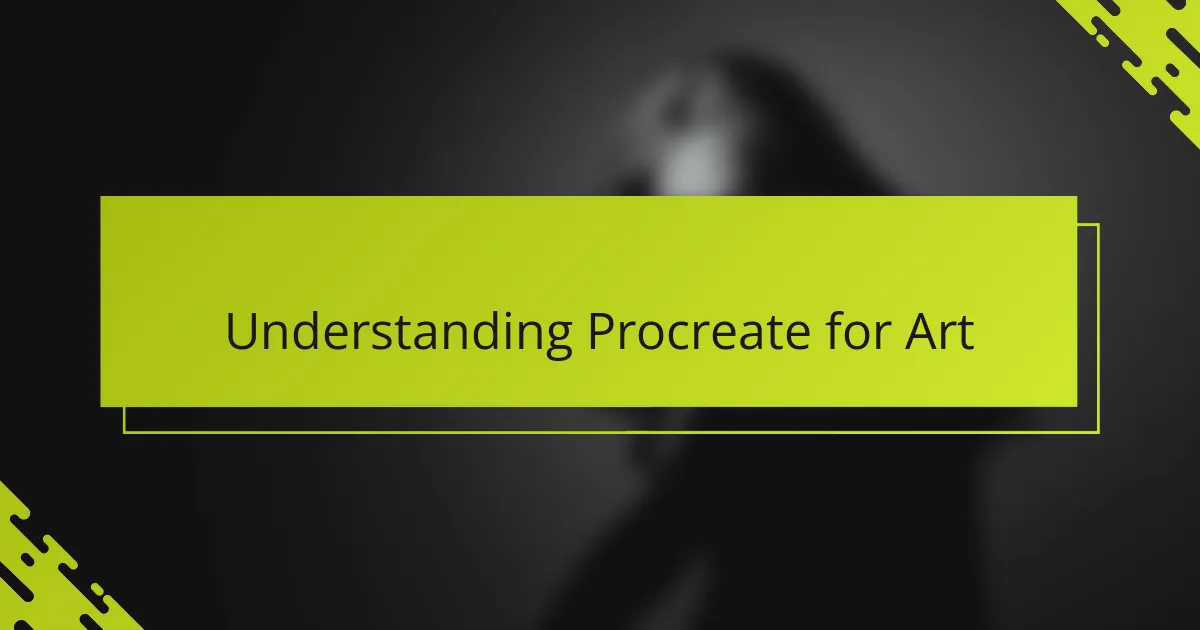
Understanding Procreate for Art
When I first opened Procreate, I was struck by how intuitive it felt—almost like the app understood my creative impulses before I even made a mark. Have you ever found a tool that just flows with your style, making the process more about expression than technical hurdles? That’s the beauty of Procreate; it’s designed to let artists focus on their vision, not the mechanics.
One thing I realized quickly is how versatile Procreate is. From delicate watercolor effects to bold, graphic lines, it handles everything with ease, which made me want to experiment more boldly. The layers and brushes gave me freedom to play, fail, and try again without fear—something I didn’t always feel with traditional media.
Understanding Procreate also means appreciating its accessibility; it brings complex art tools to a handheld device, making art more approachable for someone like me who’s often on the go. This app reshaped how I think about creating, reminding me that art isn’t confined to a studio—it’s wherever inspiration strikes.
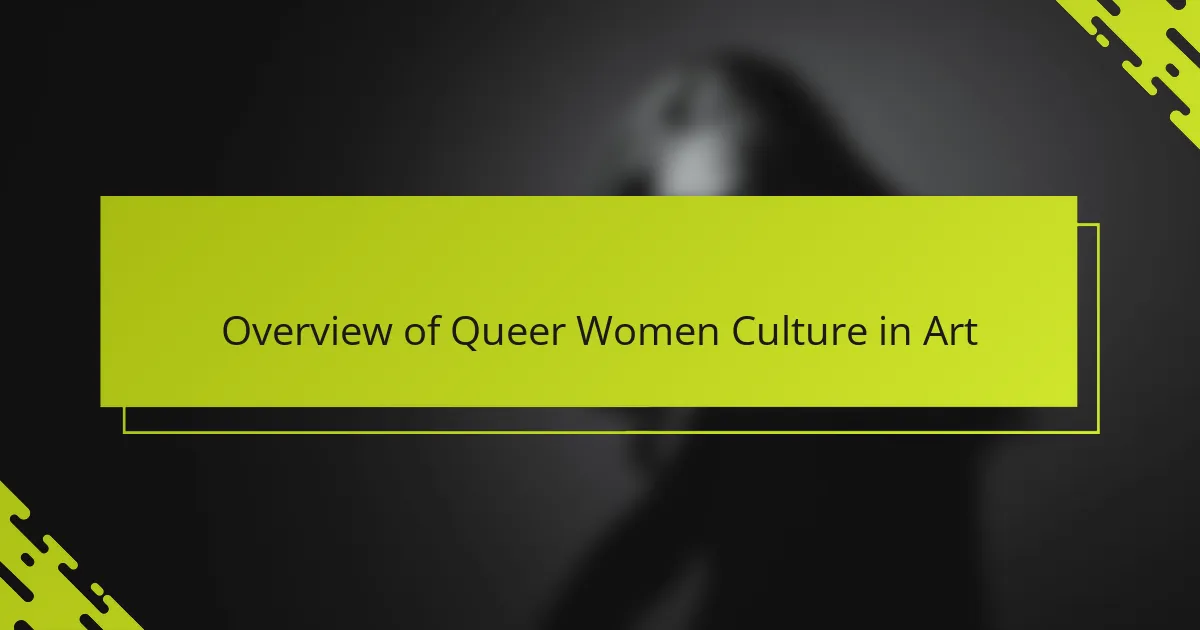
Overview of Queer Women Culture in Art
Queer women culture in art has always been a powerful space for storytelling and self-expression. I find it fascinating how artists within this community challenge conventional norms and create work that speaks to identity, resilience, and community in ways that feel deeply authentic. Have you noticed how this kind of art often carries emotions that words alone can’t capture?
What stands out to me is the diverse range of styles and voices that queer women bring to the art world. It’s not just about representation; it’s about reclaiming narratives and pushing boundaries in both content and form. This vibrant mix of personal and political often results in artwork that surprises, inspires, and connects on a visceral level.
Reflecting on my own experience, engaging with queer women’s art made me realize how much space there is for honesty and vulnerability. These pieces often invite you in, breaking down walls and encouraging empathy. It’s a reminder that art isn’t just something to look at—it’s a way to see the world through someone else’s eyes.
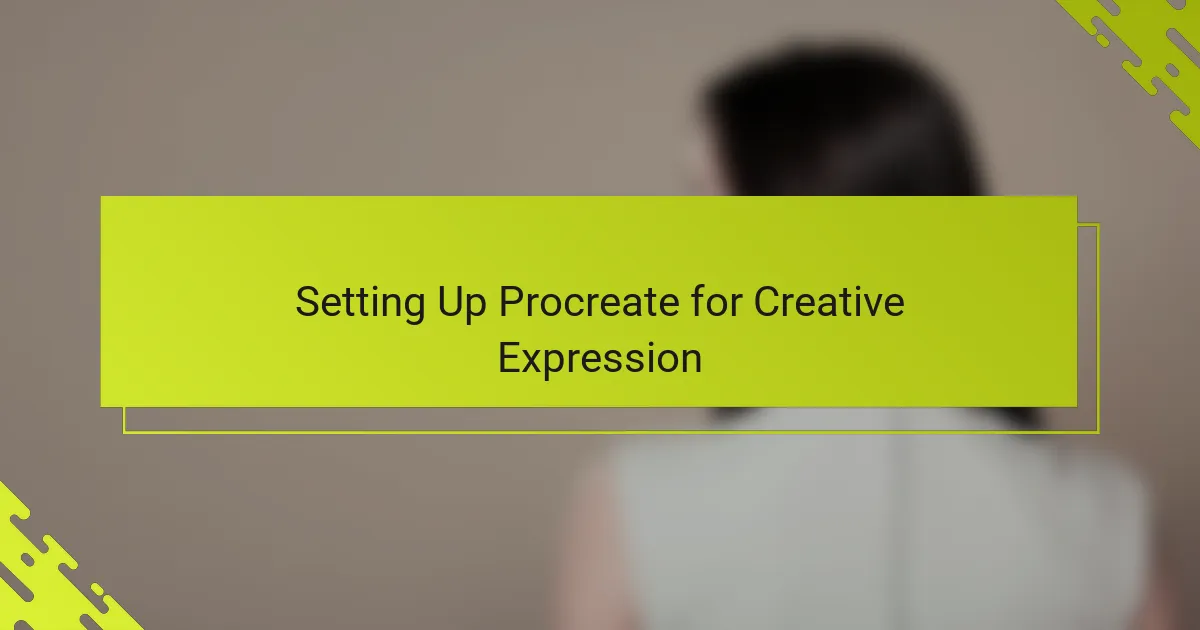
Setting Up Procreate for Creative Expression
Setting up Procreate was like opening a door to endless possibilities. I remember adjusting the canvas size to fit the style I wanted to explore—sometimes small and intimate, sometimes large and bold. Have you ever noticed how the right workspace can change your entire mindset before even drawing a single line?
Choosing brushes felt like picking tools for a personal ritual. The way Procreate lets you customize each brush made me feel in control of my expression, almost like tailoring a suit that fits just right. I found myself mixing textures and strokes, discovering new ways to make my emotions visible.
Organizing layers became my quiet meditation. It gave me freedom to build, dismantle, and rebuild my ideas without fear of ruining the whole piece. Don’t you think that kind of flexibility is what lets creativity breathe and grow naturally?
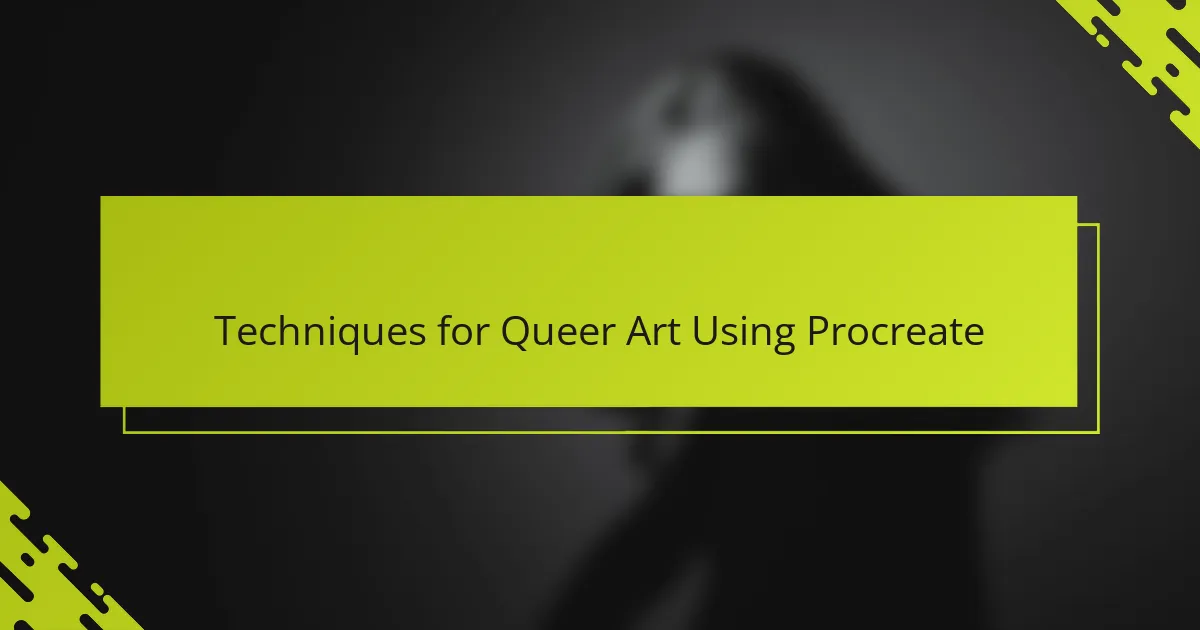
Techniques for Queer Art Using Procreate
One technique I find essential for queer art in Procreate is embracing color symbolism to convey identity and emotion. Mixing vibrant hues or soft pastels lets me visually express complex feelings tied to queerness—sometimes loud and proud, sometimes tender and introspective. Have you ever noticed how a single shade can carry so much meaning beyond words?
Layer blending modes are another game-changer for me. By experimenting with overlays and multiply effects, I can create rich textures that reflect the nuances of queer experience—layered, sometimes complicated, yet beautiful. It’s like painting feelings over memories, where transparency becomes a metaphor for vulnerability.
I also lean heavily on Procreate’s custom brush creation to capture diverse textures that speak to my story. Whether it’s rough, scratchy lines representing struggle or smooth gradients suggesting calm, customizing brushes makes each stroke feel intentional. Don’t you love when a tool adapts to you, turning a digital canvas into a personal diary?
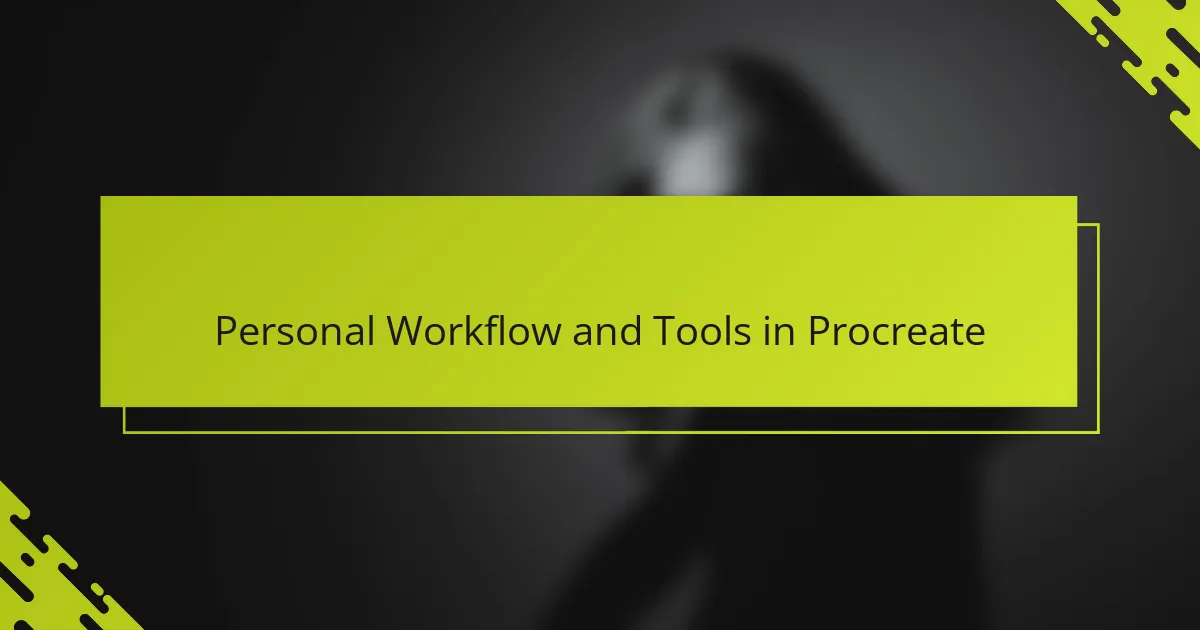
Personal Workflow and Tools in Procreate
In my Procreate workflow, the way I organize brushes has become almost ritualistic. I group them by texture and mood—some for sketching, others for bold color blocks—which helps me dive straight into the feeling I want to capture without overthinking technicalities. Have you ever tried arranging your tools so intuitively that the creative flow doesn’t stop once you start?
One tool I rely on heavily is the QuickShape feature. It sounds simple, but being able to snap perfect lines or shapes in seconds keeps my work clean without sacrificing spontaneity. This little convenience feels like having a trusted assistant, helping me balance precision with the raw emotion I want to pour onto the canvas.
Layers are my silent collaborators in Procreate. I often think of them as transparent sheets where each layer holds a part of my story—sometimes hidden beneath others, sometimes bold and upfront. Managing these layers with naming and color coding has made the whole process feel less overwhelming and more like an unfolding narrative I’m excited to reveal.
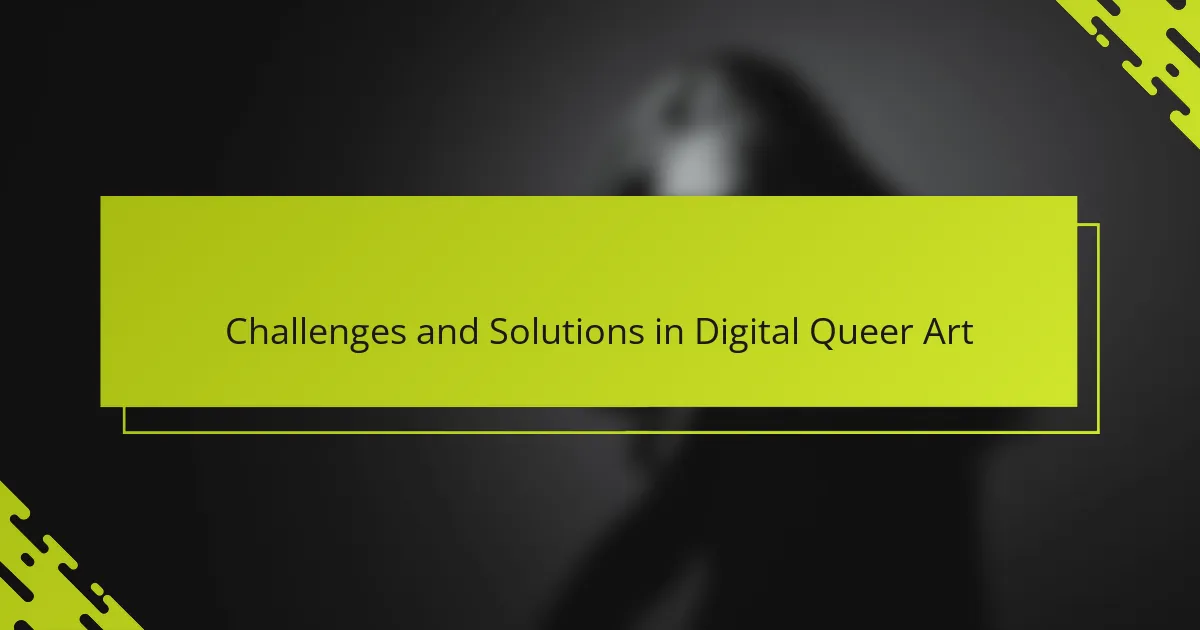
Challenges and Solutions in Digital Queer Art
Navigating digital queer art with Procreate hasn’t been without its hurdles. I’ve often struggled with how to authentically represent nuanced identities within the constraints of digital tools. Have you ever felt that the brushes or palettes available just don’t quite capture the complexity of your experience? For me, this meant spending extra time customizing brushes and experimenting with color mixes until the artwork finally felt true.
Another challenge has been the invisibility of queer narratives in mainstream digital art communities. Sometimes, it felt isolating to create pieces that didn’t instantly resonate with wider audiences. What helped was connecting with niche groups online, where shared experiences and honest feedback made a huge difference. Those communities turned my creative frustrations into motivation, reminding me that vulnerability in art can build powerful bonds.
On the practical side, mastering Procreate’s layer system was a game-changer for managing complexity in my work. At first, it was intimidating—too many layers, too much to control—but once I developed a workflow with consistent naming and color coding, it felt liberating. This structure let me focus on emotional expression without getting overwhelmed by technical clutter, which I believe is essential when creating art that’s both personal and political.
